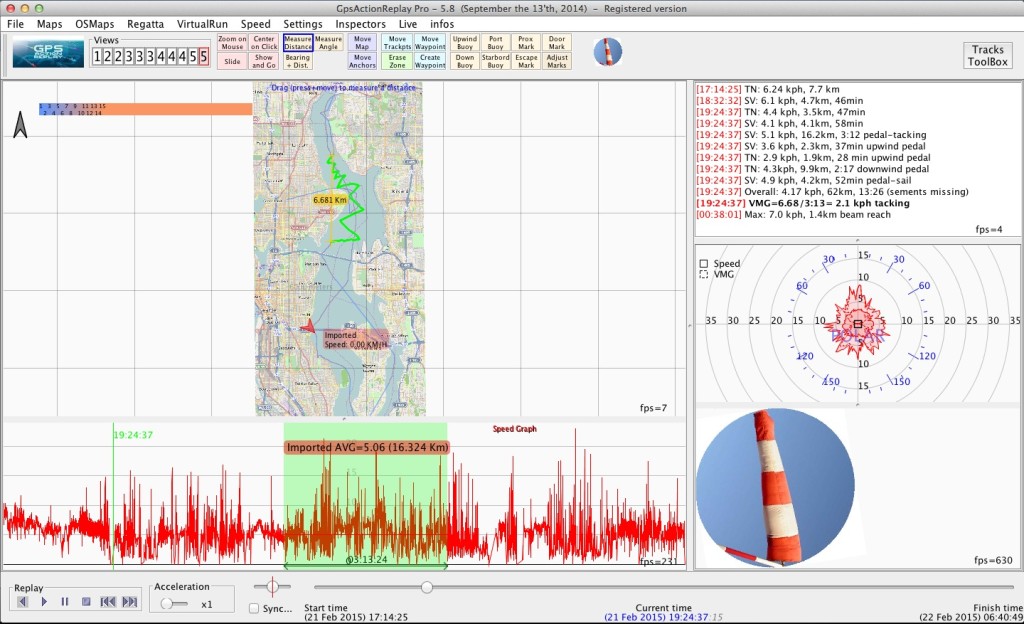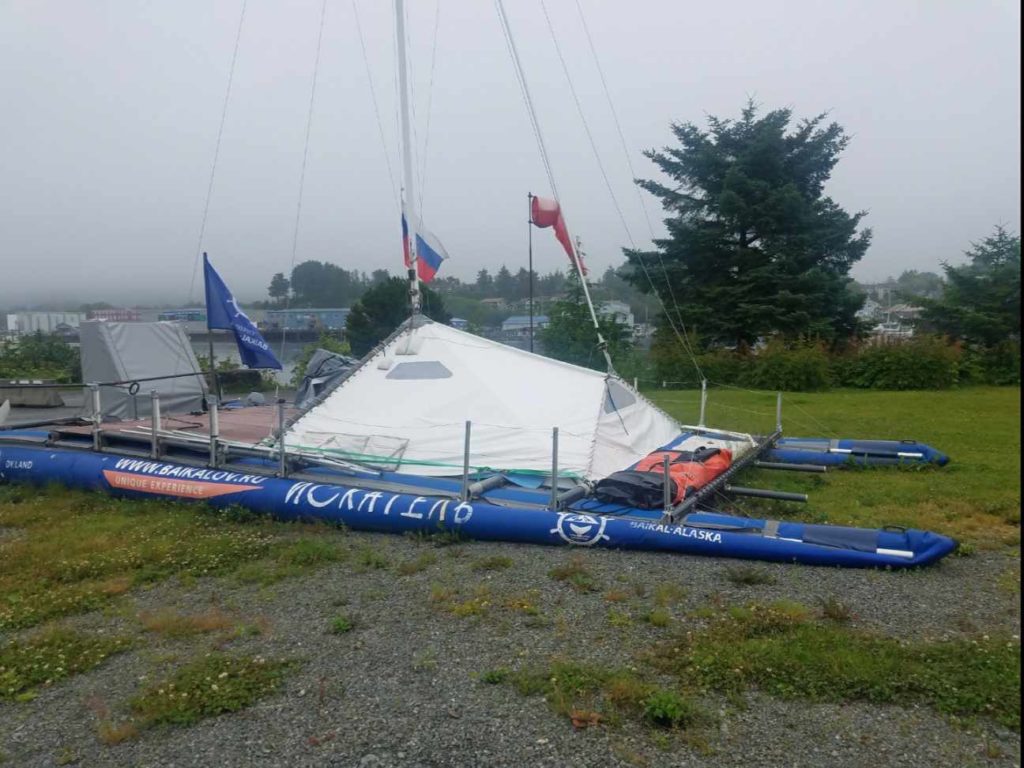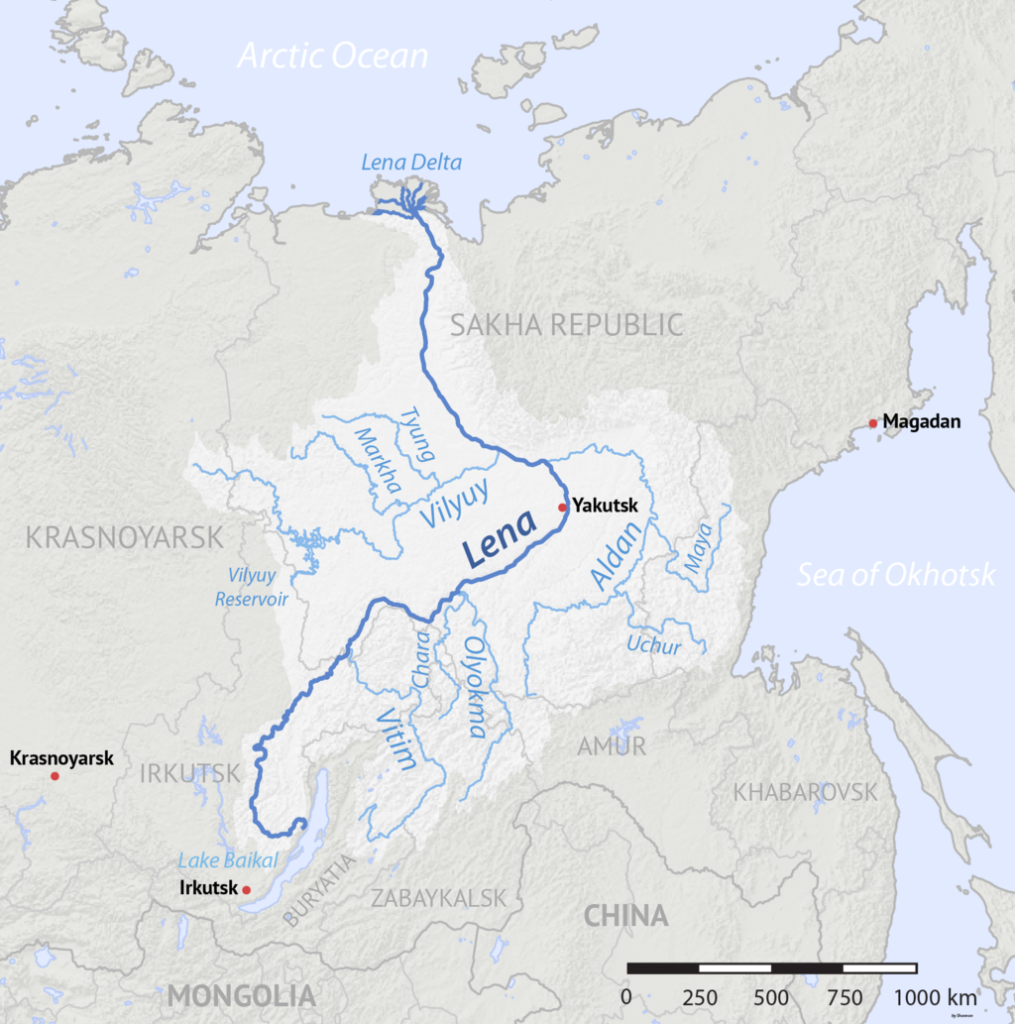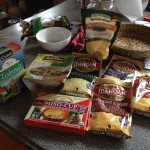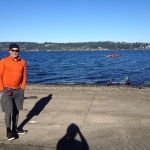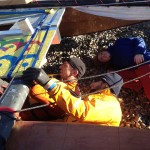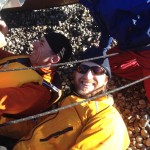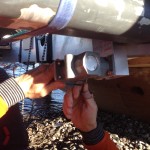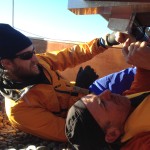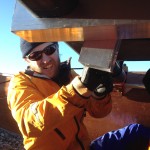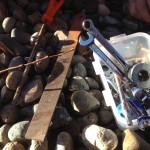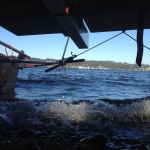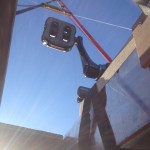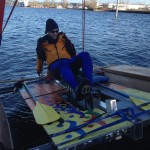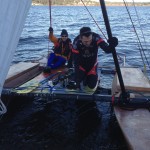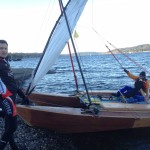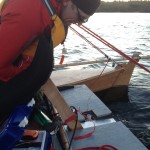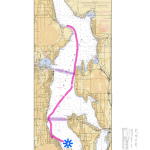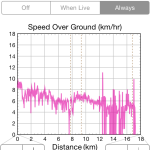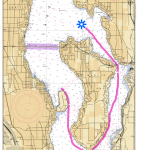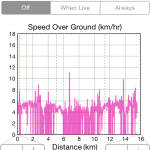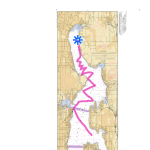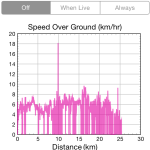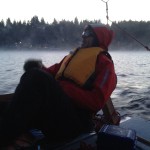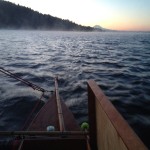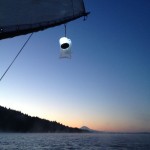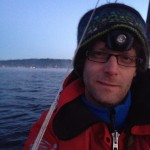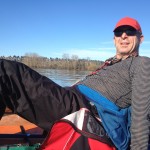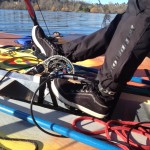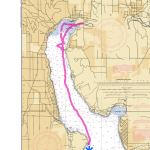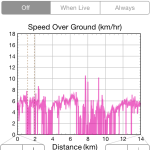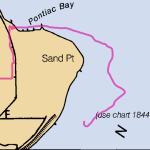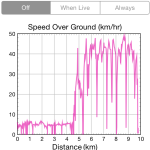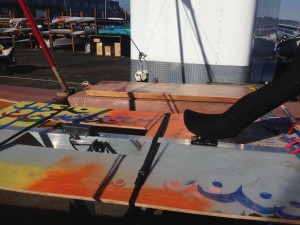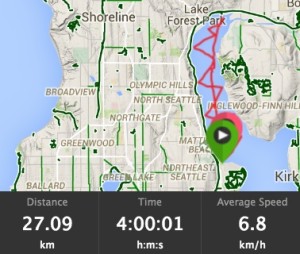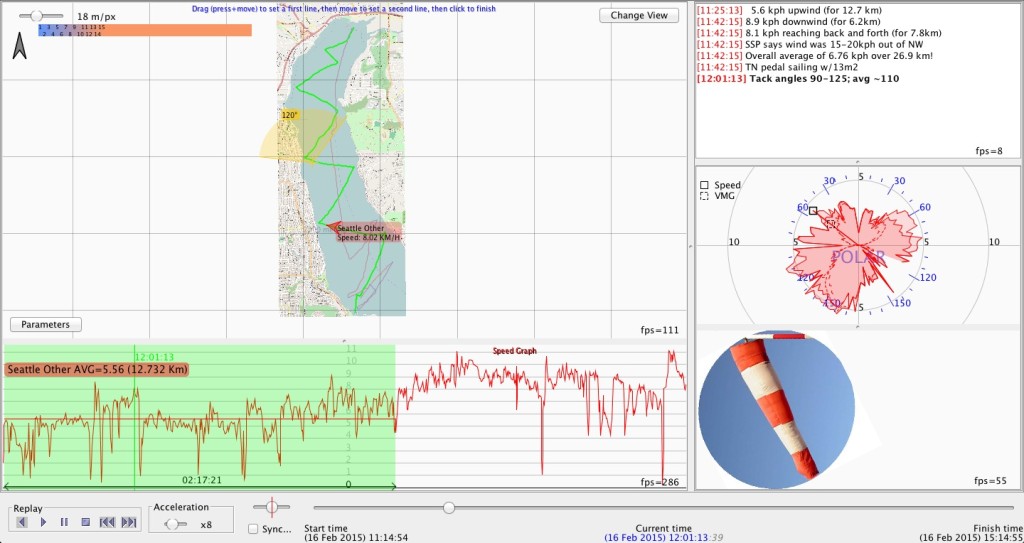As Team Sea Runners prepares to run back to the sea (or at least lake) again, it seems a good time to reflect back on our first lake trial, providing an account of the adventure and some performance data. Starting on February 22, 2015, in the mid-evening from Sail Sand Point, we pedal-sailed for almost 18 hours around Lake Washington. Along the way we circumnavigated Mercer Island, were startled by the sounds of mid-night maelstroms, and met a misty, frosty dawn by securing our craft to “the shish-kebob stick” off of St. Edwards Park.
From a R2AK training perspective, we learned a lot. First, don’t put the 2:1 90-degree drive on backwards, unless you want a really high cadence for very little propulsion! Second, with the right tools you can fix such problems on the beach. Third, don’t drop nuts on a cobble beach if you plan on seeing them again. Thanks to some help from Mike and Enzo, Thomas got Matt’s pedal drive (2:1 Mitrpak, carbon-fiber sleeved bent shaft, and carbon-fiber prop) working well. Our sail rig was the 13~m2 crab claw on the A-frame windsurfer mast raked forward about 20 degrees.
We also got a good sense of what it’s like to pedal on a watch schedule through the night. Pedaling for a couple hours is doable, especially with water and snack food handy. Observing the shoreline takes away some of the monotony, but we can now report that the Mercer Island population uniformly watches big bright screens on Sunday nights, in stark contrast to the residents of Lake Union who commonly exhibit postprandial coital activity. While Nature may provide us with entertainment aplenty along the BC coast, bringing some music or books on tape may boost morale during the R2AK if we run into multiple no-wind days.
Mother Nature did provide us with some wonderful experiences. It’s always amazing to night sail on Lake Washington — alone even in the summer months as the metropolis sleeps around you — but on this longer voyage we were privileged to witness two new phenomena. Around 2 in the morning as we tacked north from the 520 bridge we kept sensing dark patches of water ahead — as if a localized gust were approaching, riffling the darkened waters. As our range closed to a couple hundred meters, the patches would emit an intense sizzling noise and slowly disappear. Eventually we resolved they must be enormous flocks of sleeping birds, but we heard no calls and never got close enough to identify the species. Another treat was sailing through sea smoke in the pre-dawn as a chill northerly wind swept over the Lake and us off St. Edwards Park. With ice forming on the deck it was other-worldly to ghost through the broken trunks and skeletal branches of the numerous trees that have fallen into the Lake from the Park. Ethereal forms seemed to rise from the Lake and drift through the dim arboreal hulks, like pirate wraiths patrolling the shoreline
Wind data
The overall wind situation was a light northerly breeze. As we set out from Sail Sand Point at around 17:15 and pedal sailed south to Seward Park (reaching it around 20:30), the northerly was blowing, but quickly decreasing from ~15 km/hr. The breeze was steady at ~<10 km/hr from midnight (through when the sea smoke was most active) until about 9 a.m. After that it slowed until we got off the water just before noon.
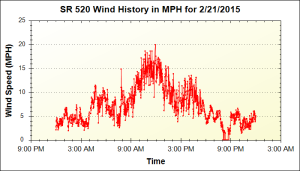
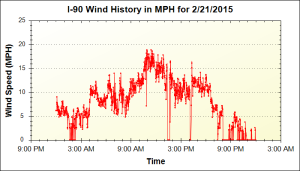
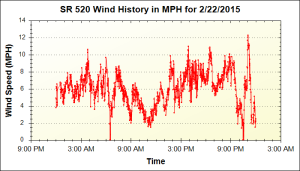
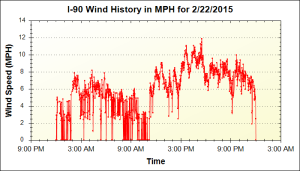
Performance data
This gentle, fairly steady northerly led to an opportunity to compare our downwind and upwind mean speeds. The screengrabs from iSailGPS show downwind speeds of 6-8 km/hr, while upwind legs typically have speeds of 4-6 km/hr. North of the bridge, where Scott pedal sailed through many tacks, the boat speed peaks near 8-10 km/hr — mostly during pedaled close or beam reaches.
Below are some results from GPSar:
TN: 6.24 kph, 7.7 km — Downwind SSP to 520
SV: 6.1 kph, 4.7km, 46min — Downwind 520-I90
TN: 4.4 kph, 3.5km, 47min — Downwind (but weakening wind) to S Mercer
SV: 4.1 kph, 4.1km, 58min — In lee of Mercer and upwind up east side
SV: 5.1 kph, 16.2km, 3:12 pedal-tacking — Upwind
SV: 3.6 kph, 2.3km, 37min upwind pedal – Upwind
TN: 2.9 kph, 1.9km, 28 min upwind pedal – Upwind
TN: 4.3kph, 9.9km, 2:17 downwind pedal – Downwind
SV: 4.9 kph, 4.2km, 52min pedal-sail — Across wind
Overall: 4.17 kph, 62km, 13:26 (sements missing)
VMG=6.68/3:13= 2.1 kph during tacking phase
Max: 7.0 kph sustained over 1.4km on a beam reach
